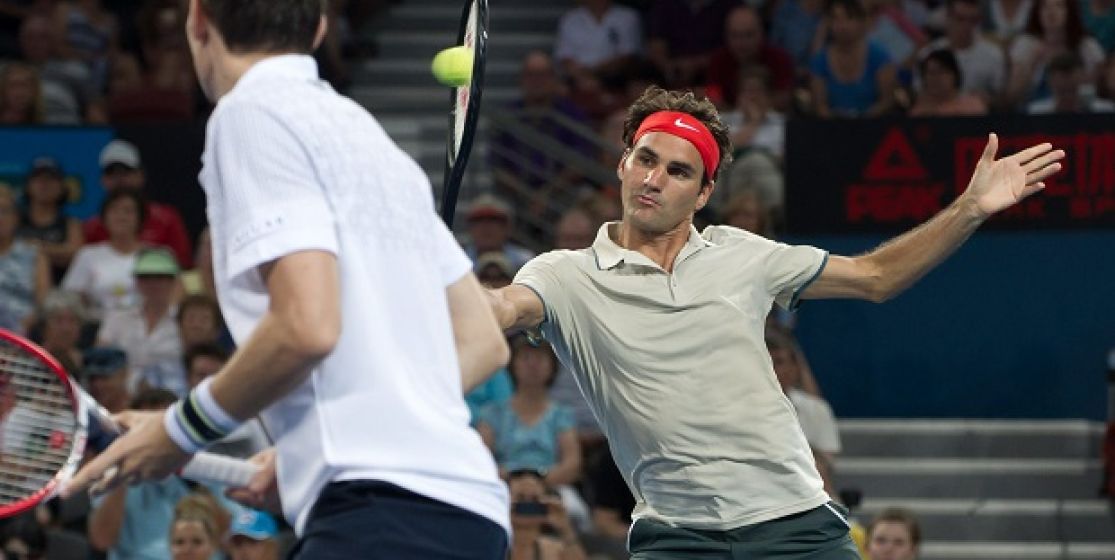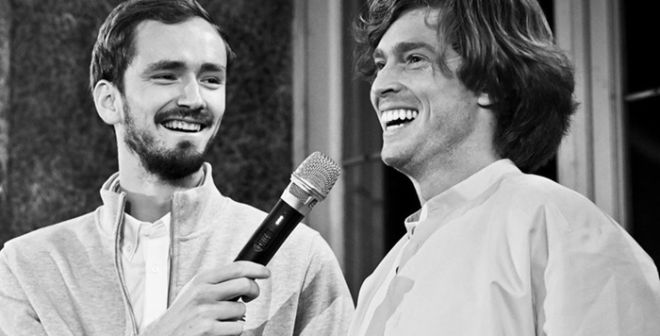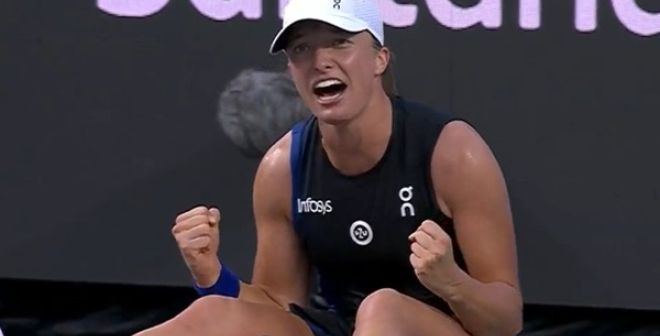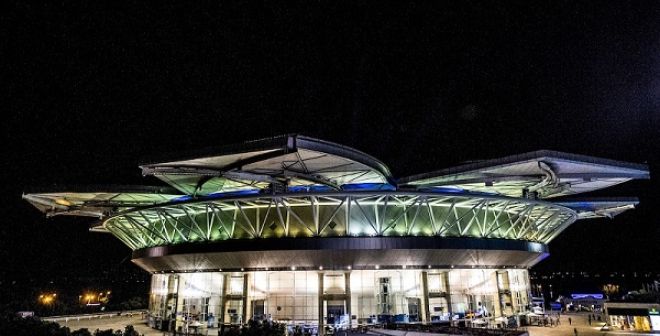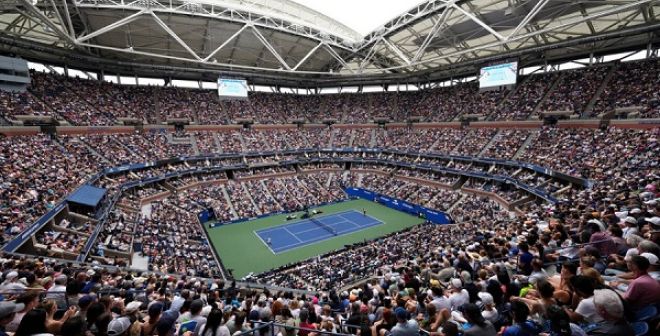Nadal-Lopez, Federer-Wawrinka, Roddick-Fish or a little further, Grosjean-Clement. The finals of the BNP Paribas Open Masters 1000 have always honoured prestigious double pairs. An incongruity in a discipline now widely abandoned by the best, much to the delight of third-string players too limited for the simples. How to revive the interest of the champions, and therefore of the public, for the practice of the doubles? The ATP, WTA and ITF can't help but wonder. We tried to help them.
The easy way: upgrade the Davis Cup by BNP Paribas
In which competition are the doubles the most important? In the Davis Cup by BNP Paribas, of course. In forty years, the final of the event has escaped only twice to the team who was leading after the Saturdays’ doubles. It would be enough to reassert the money and points worth of the competition for the best to see an interest in participating... and train during the year for potential crucial doubles with their national team. To this end, a first step was taken, in 2009, by rewarding the tournaments in ATP points. "This is a win-win situation for both the Davis Cup and the ATP, said Francesco Ricci Bitti, President of the International Federation. The national team matches have become more attractive to the best players." So much for theory. In practice, the maximum 625 points that a player can collect by winning all his matches, doesn’t weigh heavily compared to the smallest of the Masters 1000. But if a new effort was made to provide the silver bowl with a value to match its rich history, then the result could again attract the world's elite.
Plus:
While many champions challenge the place or the format of the Davis Cup by BNP Paribas in the calendar, its full integration in the ATP points scheme would overcome many reservations. Not to mention the suspense made possible by the status of the last annual event held by the final. No later than 2013 the match Serbia-Czech Republic has failed to be the real decider of the season because of how tight were Rafael Nadal and Novak Djokovic.
Minus:
By definition, in a collective exercise, everyone doesn't start on an equal footing. A team can be too weak and therefore won't last in the competition. It doesn't matter if one of the players of the team is Andy Murray. But a team that is too strong, just like Spain in recent years, with players ranked around the 20th place in the world is left behind. Not great for sporting fairness.
The hard way: merging the rankings
"To rejuvenate the doubles, the ATP and WTA should have only one ranking, based 75% on singles results and 25% on doubles results. This is what I advocated at the time I was chairman of the ATP players." For the American Tim Mayotte, himself a former top player, the salvation of the discipline currently dominated by pre-forties players goes through the merger of the results: keep the premium for the simples, but enlivened with a pinch of doubles. Mayotte believes that this would force the best to reconnect with the discipline. The option has the advantage of already existing in the junior world rankings, providing a field of analysis. Since 2004, the hierarchy of champions in training is calculated based on their best six singles results and best six doubles results, worth 25%. The avowed purpose of the ITF is to "encourage the practice of the doubles among young people and, therefore, at the professional level." Could the natural evolution of the process lead to apply it to"the big boys"?
Plus:
If the current champions would struggle to accept such shift, the following generations, used to practice this type of combined rankings, would probably be less restive. Especially as the ITF bet has been generally validated by the results on the courts, especially on the women's tour, where most of the players present in the Top 10 in simples also play the doubles seriously.
Minus:
The lack of clarity of such rankings. For some, the doubles transplant took well, but not for all... A choice made sensibly, of course, but which would cause endless arguments as consequences in the standings. The junior experience showed that Grigor Dimitrov was able to lose the title of world champion in 2008 to the Taiwanese Yang Tsung-Hua, despite the advantage of two Grand Slam successes in simples. Three times, the World No. 1 at the end of the season even completed the exercise without winning any Grand Slam title in simples (Noppawan Lertcheewakarn in 2008, Juan Sebastian Gomez in 2010 and Irina Khromacheva in 2011).
The hard way (bis): Re-accelerate the playing conditions
The tennis player is first and foremost a pragmatic being. If masculine champions have all abandoned the doubles since Kafelnikov and Rafter at the turn of the 2000s, it is primarily because they are no longer useful for the simples. "I played a lot of doubles because it allowed to work aspects of the game without feeling the gloom of training", explained at the time the Russian, winner of two Grand Slam titles in singles and four in doubles. But with the slowdown of the playing conditions in the last ten years, the skills required by the doubles are now the exact opposites of the fundamentals of a singles match. The current singles require power and endurance from the baseline? The doubles require skills and dexterity at the net. These days, the simples also rely on the strength of the two-handed backhand at the expense of the one-handed approaches so effective to storm the net. But if tennis regains some speed then the cards will quickly be redistributed. Among some newcomers who like to play forward, like the French Herbert and Olivetti, we’ve already seen a comeback of the practice of the doubles as a project, not just to get a few extra dollars in prize money.
Plus:
The lack of diversity among the playing styles in the elite is beginning to be obvious, and could become a problem within a few years, as it is already the case on the WTA tour. Several initiatives, in an individual tournaments scale or something more global such as the development of the grass season from 2015 - promotion of the Queen's and Halle in ATP 500, creating a ATP 250 in Stuttgart - go in this direction of a renewed acceleration of the game and at the same time, give back its letters of nobility to the doubles.
Minus:
The higher you go to the top of the pyramid, the less top players have an interest for something to change. Frequently demanding more tournaments on clay at the expense of hard surfaces, the World No. 1 Rafael Nadal would not necessarily be happy of a return to really fast surfaces. Sergiy Stakhovsky, a rare representative of the serve-and-volley still present in the Top 100, is more mischievous: "I agree to play half of the year on clay... but then I ask for the other half to be played on fast courts as it was the case ten years ago!"
The crazy way: the best in simples against the best in doubles
Two against one. The practice has always existed. It even has a name: "the Canadian doubles" Nobody has ever tried to make of it a competition in its own right. Wrongly perhaps, as the exercise has a strong dramatic potential. One could thus imagine, on each tournament, a super-final between the winner in simples against the winners in doubles: the winner(s) would win the tournament. And then we can dream of a clash between Roger Federer and the Bryan twins, the rogue granddads Leander Paes and Radek Stepanek trying to confuse Novak Djokovic, or Sara Errani and Roberta Vinci trying to tame Serena Williams. Crazy? Maybe. Preordained? Not so sure: "Singles and doubles are so different that the results might be surprising, according to Bruno Soares, current World No. 3 in doubles, questioned - or rather criticized - on the current level of his discipline. Returning Bob Bryan's service or Fernando Verdasco's forehand is everything but easy!" One way to know if the defence of the Brazilian can stand: try it.
Plus:
Exceptional Points guaranteed for a highly telegenic exercise, reconciling in this respect the mass media with the doubles. The game in pairs also promoting long careers, it could even be possible to use the IPTL championships (new inter-city planned at the end of the year in Asia) to play matches between champions of different generations, with for example, Pete Sampras, still fit and amazing at the service as a guest star,
Minus:
It will be necessary to consider the possible alternative when one player has qualified for the final of both singles and doubles. Then have the finalist doubles pair to face the said singles champion? Or to follow the logic of entertainment by drawing lots and find a doubles partner in the public? The ultimate interaction, somehow. Show must go on…


